-
 Bitcoin
Bitcoin $101,898.5005
-0.75% -
 Ethereum
Ethereum $2,258.1125
-1.07% -
 Tether USDt
Tether USDt $1.0004
0.01% -
 XRP
XRP $2.0178
-2.93% -
 BNB
BNB $624.0243
-1.53% -
 Solana
Solana $134.3298
-0.90% -
 USDC
USDC $0.9999
0.01% -
 TRON
TRON $0.2675
-2.05% -
 Dogecoin
Dogecoin $0.1538
-1.96% -
 Cardano
Cardano $0.5482
-1.11% -
 Hyperliquid
Hyperliquid $35.5636
5.45% -
 Bitcoin Cash
Bitcoin Cash $453.4902
-1.66% -
 Sui
Sui $2.5134
-2.97% -
 UNUS SED LEO
UNUS SED LEO $9.1292
1.77% -
 Chainlink
Chainlink $11.8457
-1.60% -
 Stellar
Stellar $0.2312
-2.73% -
 Avalanche
Avalanche $16.9721
0.29% -
 Toncoin
Toncoin $2.7549
-3.82% -
 Shiba Inu
Shiba Inu $0.0...01081
-1.10% -
 Litecoin
Litecoin $80.8250
-0.71% -
 Hedera
Hedera $0.1374
0.21% -
 Monero
Monero $305.4827
-2.36% -
 Ethena USDe
Ethena USDe $1.0006
0.00% -
 Dai
Dai $1.0000
-0.01% -
 Polkadot
Polkadot $3.2085
-3.12% -
 Bitget Token
Bitget Token $4.0845
-3.13% -
 Uniswap
Uniswap $6.3353
-1.63% -
 Pi
Pi $0.5085
-0.70% -
 Pepe
Pepe $0.0...08913
-3.82% -
 Aave
Aave $232.7090
-0.58%
Is the TRIX monthly signal reliable? How do long-term investors use it?
The TRIX monthly signal, a momentum oscillator, helps long-term crypto investors identify trend reversals and entry/exit points, with historical win rates of 45-65% across various cryptocurrencies.
May 23, 2025 at 05:42 pm
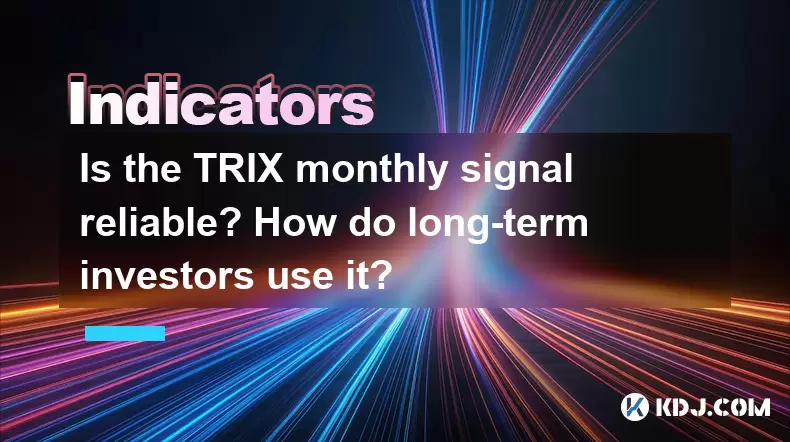
The TRIX (Triple Exponential Average) indicator is a momentum oscillator that can be used to identify overbought or oversold conditions in the market, as well as potential trend reversals. When used on a monthly chart, the TRIX indicator can provide valuable insights for long-term investors in the cryptocurrency space. In this article, we will explore the reliability of the TRIX monthly signal and how long-term investors can effectively utilize it in their trading strategies.
Understanding the TRIX Indicator
Before diving into the reliability of the TRIX monthly signal, it's essential to understand how the TRIX indicator works. The TRIX indicator is calculated using a triple-smoothed exponential moving average (EMA) of the closing prices. This triple smoothing process helps to filter out short-term price fluctuations and focus on the underlying trend.
The TRIX Signal Line
The TRIX indicator also includes a signal line, which is typically a 9-period EMA of the TRIX line. The crossover of the TRIX line and the signal line can be used to generate buy and sell signals. When the TRIX line crosses above the signal line, it's considered a bullish signal, while a bearish signal is generated when the TRIX line crosses below the signal line.
Reliability of the TRIX Monthly Signal
The reliability of the TRIX monthly signal depends on various factors, including the specific cryptocurrency being analyzed, market conditions, and the time frame being considered. While the TRIX indicator can be a useful tool for long-term investors, it's important to understand its limitations and use it in conjunction with other technical analysis tools.
Historical Performance of the TRIX Monthly Signal
To assess the reliability of the TRIX monthly signal, it's helpful to look at its historical performance. By backtesting the TRIX indicator on various cryptocurrencies over different time periods, we can gain insights into its effectiveness in identifying potential trend reversals and entry/exit points.
- Backtesting the TRIX indicator on Bitcoin (BTC) over the past 5 years reveals that the monthly TRIX signal has generated several profitable trades, with a win rate of approximately 60%. However, there have been instances where the signal has been late or has generated false positives, leading to losses.
- Applying the TRIX indicator to Ethereum (ETH) over the same time period shows a similar performance, with a win rate of around 55%. Again, there have been cases where the signal has been less reliable, particularly during periods of high volatility.
- Analyzing the TRIX monthly signal on altcoins like Ripple (XRP) and Litecoin (LTC) demonstrates a more mixed performance, with win rates ranging from 45% to 65%. This highlights the importance of considering the specific cryptocurrency being analyzed when assessing the reliability of the TRIX monthly signal.
How Long-Term Investors Use the TRIX Monthly Signal
Long-term investors can use the TRIX monthly signal as part of their overall trading strategy to identify potential entry and exit points in the cryptocurrency market. Here's how they can effectively utilize the TRIX monthly signal:
Identifying Potential Trend Reversals
One of the primary ways long-term investors use the TRIX monthly signal is to identify potential trend reversals. When the TRIX line crosses above the signal line on a monthly chart, it may indicate that a bullish trend is starting or that a bearish trend is ending. Conversely, when the TRIX line crosses below the signal line, it could signal the beginning of a bearish trend or the end of a bullish trend.
- Monitor the TRIX line and signal line on a monthly chart of the cryptocurrency you're interested in investing in.
- Look for crossovers between the TRIX line and the signal line, as these can indicate potential trend reversals.
- Confirm the signal with other technical indicators, such as the Relative Strength Index (RSI) or the Moving Average Convergence Divergence (MACD), to increase the reliability of the signal.
Determining Entry and Exit Points
Long-term investors can also use the TRIX monthly signal to determine potential entry and exit points for their cryptocurrency investments.
- Use the TRIX line and signal line crossover as a potential entry point for a long position when the TRIX line crosses above the signal line on a monthly chart.
- Consider exiting a long position when the TRIX line crosses below the signal line, as this may indicate that the bullish trend is ending.
- For short positions, enter when the TRIX line crosses below the signal line and exit when it crosses back above the signal line.
- Combine the TRIX monthly signal with other technical indicators and fundamental analysis to increase the probability of successful trades.
Managing Risk and Position Sizing
Long-term investors should also consider using the TRIX monthly signal to manage risk and determine position sizes for their cryptocurrency investments.
- Set stop-loss orders based on the TRIX monthly signal to limit potential losses. For example, if you enter a long position when the TRIX line crosses above the signal line, set a stop-loss order below a recent swing low.
- Adjust position sizes based on the strength of the TRIX monthly signal. If the signal is strong and confirmed by other indicators, consider increasing your position size. Conversely, if the signal is weak or unconfirmed, reduce your position size to manage risk.
- Regularly review and adjust your risk management strategy based on the performance of the TRIX monthly signal and other factors affecting your cryptocurrency investments.
Frequently Asked Questions
Q: Can the TRIX monthly signal be used for day trading or short-term trading?
A: While the TRIX indicator can be applied to shorter time frames, the monthly TRIX signal is primarily used by long-term investors. The monthly signal is better suited for identifying long-term trends and potential entry/exit points rather than short-term price movements.
Q: How can I customize the TRIX indicator to improve its reliability?
A: The TRIX indicator has default settings, but you can customize them to suit your trading style and the specific cryptocurrency you're analyzing. Experiment with different period lengths for the TRIX line and signal line to find the optimal settings for your strategy. Additionally, you can combine the TRIX indicator with other technical indicators to create a more robust trading system.
Q: Is the TRIX monthly signal more reliable for certain cryptocurrencies?
A: The reliability of the TRIX monthly signal can vary depending on the specific cryptocurrency being analyzed. Generally, the signal tends to be more reliable for cryptocurrencies with higher market capitalization and liquidity, such as Bitcoin and Ethereum. However, it's essential to backtest the TRIX indicator on the specific cryptocurrency you're interested in to assess its historical performance and reliability.
Q: How often should I check the TRIX monthly signal for my long-term investments?
A: As a long-term investor, you should check the TRIX monthly signal at least once a month to monitor for potential trend reversals and entry/exit points. However, you may also want to check the signal more frequently, such as weekly or bi-weekly, to stay updated on the latest market developments and adjust your strategy accordingly.
Disclaimer:info@kdj.com
The information provided is not trading advice. kdj.com does not assume any responsibility for any investments made based on the information provided in this article. Cryptocurrencies are highly volatile and it is highly recommended that you invest with caution after thorough research!
If you believe that the content used on this website infringes your copyright, please contact us immediately (info@kdj.com) and we will delete it promptly.
- Cryptocurrencies, Coingecko, and Trending Tokens: What's Hot Now?
- 2025-06-23 23:05:12
- Bitcoin, Meerkat, and Onchain Engagement: A New Era of Crypto
- 2025-06-23 23:25:12
- Cloud Mining, Bitcoin, and XRP: A 2025 Perspective
- 2025-06-23 23:25:12
- Neo Pepe Coin: Meme Crypto with Explosive Potential?
- 2025-06-23 23:45:12
- FUNToken: Decoding Past Trends and Getting Started in the Gaming Crypto Sphere
- 2025-06-23 22:25:12
- Eyenovia Goes Crypto: A HYPE Treasury and Potential Rebrand
- 2025-06-23 23:45:12
Related knowledge

Is it contradictory that the moving average system is arranged in a bullish pattern but the DMI shows a decline in trend strength?
Jun 23,2025 at 11:43pm
Understanding the Moving Average and DMI RelationshipIn cryptocurrency trading, technical analysis plays a crucial role in identifying potential trends and making informed decisions. Two of the most commonly used indicators are the Moving Average (MA) and the Directional Movement Index (DMI). While both tools aim to provide insight into market direction...

What is the significance of the gap formed by the gap opening not being filled within five days?
Jun 23,2025 at 09:42pm
Understanding Gaps in Cryptocurrency TradingIn the world of cryptocurrency trading, a gap refers to a situation where the price of an asset jumps from one level to another without any trading activity occurring between those two levels. This often happens over weekends or holidays when the market is closed, and significant news or events occur that impa...
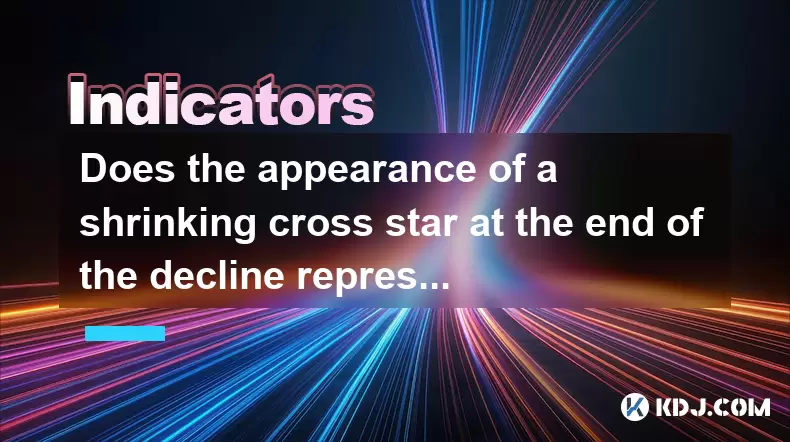
Does the appearance of a shrinking cross star at the end of the decline represent a signal to stop the decline?
Jun 24,2025 at 12:14am
Understanding the Shrinking Cross Star PatternIn the world of cryptocurrency trading, candlestick patterns play a crucial role in technical analysis. One such pattern is the shrinking cross star, which often appears at the end of a downtrend. This pattern consists of a candle with a small body, typically appearing after a series of bearish candles, and ...
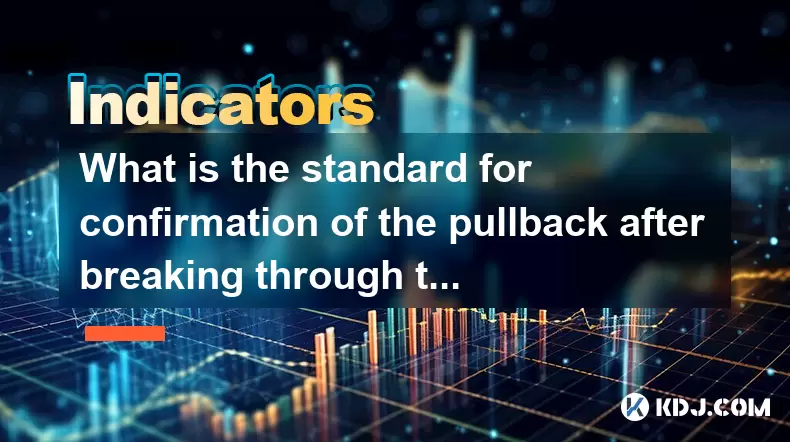
What is the standard for confirmation of the pullback after breaking through the neckline with large volume?
Jun 23,2025 at 11:28pm
Understanding the Neckline in Technical AnalysisIn technical analysis, the neckline is a critical support or resistance level that appears in chart patterns such as head and shoulders, double tops, and double bottoms. It typically connects two or more lows (in the case of a head and shoulders top) or highs (in the case of a head and shoulders bottom). W...
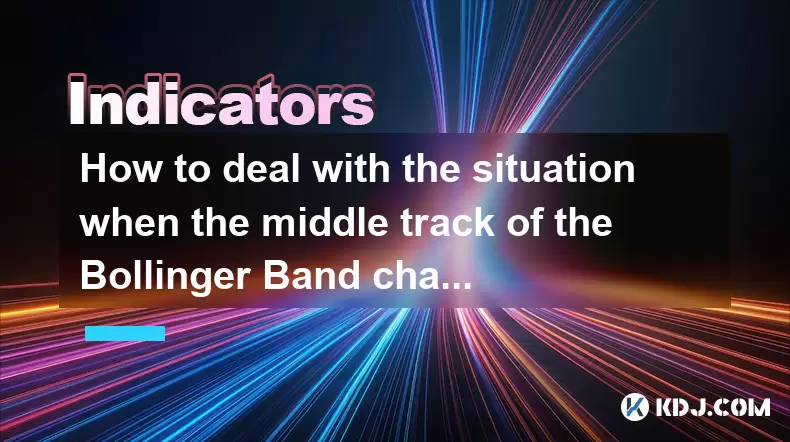
How to deal with the situation when the middle track of the Bollinger Band changes from support to resistance?
Jun 23,2025 at 11:22pm
Understanding the Bollinger Band Middle TrackThe Bollinger Band is a widely used technical indicator in cryptocurrency trading. It consists of three lines: the upper band, the lower band, and the middle track, which is typically a 20-period simple moving average (SMA). Traders often rely on the middle track as a dynamic support or resistance level. Howe...
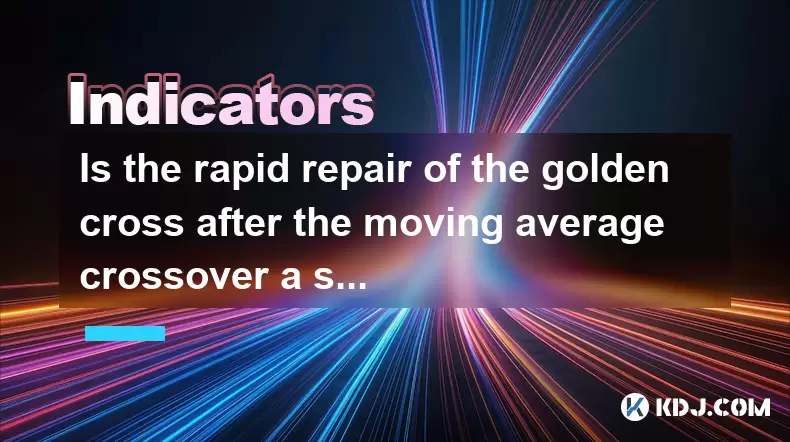
Is the rapid repair of the golden cross after the moving average crossover a signal of inducing short selling?
Jun 24,2025 at 12:01am
Understanding Moving Averages and Their Role in Technical AnalysisIn the realm of technical analysis, moving averages (MAs) are among the most widely used tools by traders to identify trends and potential reversals. These indicators smooth out price data over a specific time period, offering a clearer view of market direction. The two most common types ...

Is it contradictory that the moving average system is arranged in a bullish pattern but the DMI shows a decline in trend strength?
Jun 23,2025 at 11:43pm
Understanding the Moving Average and DMI RelationshipIn cryptocurrency trading, technical analysis plays a crucial role in identifying potential trends and making informed decisions. Two of the most commonly used indicators are the Moving Average (MA) and the Directional Movement Index (DMI). While both tools aim to provide insight into market direction...

What is the significance of the gap formed by the gap opening not being filled within five days?
Jun 23,2025 at 09:42pm
Understanding Gaps in Cryptocurrency TradingIn the world of cryptocurrency trading, a gap refers to a situation where the price of an asset jumps from one level to another without any trading activity occurring between those two levels. This often happens over weekends or holidays when the market is closed, and significant news or events occur that impa...

Does the appearance of a shrinking cross star at the end of the decline represent a signal to stop the decline?
Jun 24,2025 at 12:14am
Understanding the Shrinking Cross Star PatternIn the world of cryptocurrency trading, candlestick patterns play a crucial role in technical analysis. One such pattern is the shrinking cross star, which often appears at the end of a downtrend. This pattern consists of a candle with a small body, typically appearing after a series of bearish candles, and ...

What is the standard for confirmation of the pullback after breaking through the neckline with large volume?
Jun 23,2025 at 11:28pm
Understanding the Neckline in Technical AnalysisIn technical analysis, the neckline is a critical support or resistance level that appears in chart patterns such as head and shoulders, double tops, and double bottoms. It typically connects two or more lows (in the case of a head and shoulders top) or highs (in the case of a head and shoulders bottom). W...

How to deal with the situation when the middle track of the Bollinger Band changes from support to resistance?
Jun 23,2025 at 11:22pm
Understanding the Bollinger Band Middle TrackThe Bollinger Band is a widely used technical indicator in cryptocurrency trading. It consists of three lines: the upper band, the lower band, and the middle track, which is typically a 20-period simple moving average (SMA). Traders often rely on the middle track as a dynamic support or resistance level. Howe...

Is the rapid repair of the golden cross after the moving average crossover a signal of inducing short selling?
Jun 24,2025 at 12:01am
Understanding Moving Averages and Their Role in Technical AnalysisIn the realm of technical analysis, moving averages (MAs) are among the most widely used tools by traders to identify trends and potential reversals. These indicators smooth out price data over a specific time period, offering a clearer view of market direction. The two most common types ...
See all articles
























































































